By: Lisa Falk
Arizona State Museum’s project Through the Eyes of the Eagle: Illustrating Healthy Living encouraged conversations, understanding and action related to diabetes prevention, a critical issue in our world today, and especially in Native American communities. It began with a traveling exhibit of the artwork from the Center for Disease Control and Prevention’s Through the Eyes of the Eagle series of books, which links diabetes prevention to Native American culture and targets elementary-school-aged children and their parents. When the museum decided to book the exhibit the question was raised as to how this display of watercolor drawings would have an impact in our community. So we turned to the community to ask.
What they told us and helped us create was an expansion of the exhibit to include the local story, active programming, and creation of a culturally relevant book aimed at older youth. After nearly three years of planning, the result was an expanded exhibit co-curated with Tohono O’odham Community Action, a reservation-based non-profit working to use cultural knowledge from the past to create solutions for the future, and inclusion of objects from the museum’s collections, production of two related videos, creation of a unique cutting-edge digital comic book, It’s Up 2 You!, and a traveling exhibit of the comic book. In addition some of the Eagle books’ artworks were on display at the University of Arizona Worlds of Words Library and we worked with them on school programs.
We used this opportunity to design exhibit and programmatic experiences that would engage family audiences. Programming included a large multicultural 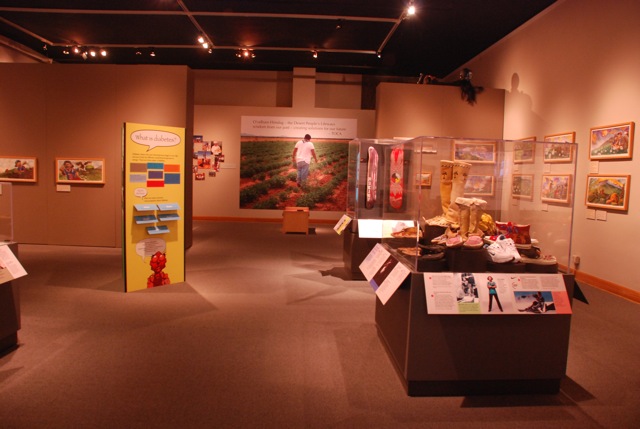 health fair produced in partnership with the Tucson Indian Center and many community groups, K-12 school programs, public library outreach programs, and lecture and film programs. In addition, blogs, TV, radio and print media coverage, resource materials for schools and the public, and jobs were created. University students learned via related internships and the museum’s collections grew to include Native designed skateboards.
health fair produced in partnership with the Tucson Indian Center and many community groups, K-12 school programs, public library outreach programs, and lecture and film programs. In addition, blogs, TV, radio and print media coverage, resource materials for schools and the public, and jobs were created. University students learned via related internships and the museum’s collections grew to include Native designed skateboards.
One of the unique products of this project continues to engage youth in making healthy decisions. The It’s Up 2 You! comic book resulted from consultations with Native American and Latino teens and was co-written and illustrated by 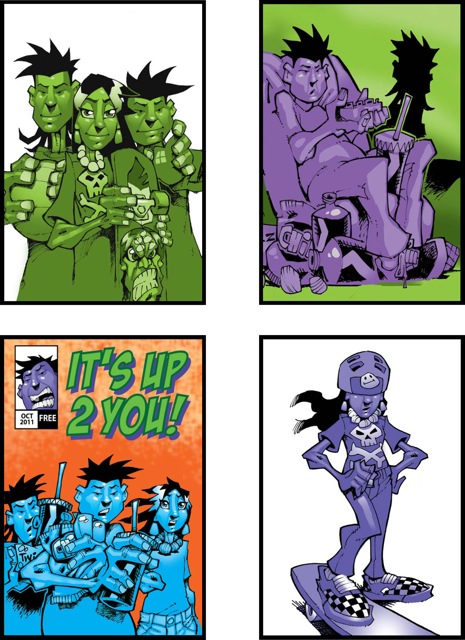 Native American artist/educator, Ryan Huna Smith. The comic book resides on the Pima County Health Department’s healthypima.org website and is also available as a free app on iTunes. The digital comic includes audio in English, Spanish and Tohono O’odham and a healthy challenge game. The University of Arizona’s College of Public Health and the American Diabetes Association served as content consultants and students and faculty from Ha:san Preparatory and Leadership School provided the audio recordings. A traveling exhibit of the comic book was on display at the Pima County Public Library where approximately 42,000 visitors saw it.
Native American artist/educator, Ryan Huna Smith. The comic book resides on the Pima County Health Department’s healthypima.org website and is also available as a free app on iTunes. The digital comic includes audio in English, Spanish and Tohono O’odham and a healthy challenge game. The University of Arizona’s College of Public Health and the American Diabetes Association served as content consultants and students and faculty from Ha:san Preparatory and Leadership School provided the audio recordings. A traveling exhibit of the comic book was on display at the Pima County Public Library where approximately 42,000 visitors saw it.
In evaluation surveys, the majority of people expressed that the exhibit and programs made them think about and inspired them to focus more on being active, eating healthy, and making others aware of how to live healthfully. They also stated that the exhibit and programs were as or more memorable, enjoyable, interesting, engaging and informative then other similar exhibits and programs.
Ingredients for Success:
As important as the products and their impact on our community’s health, was the deepening of the museum’s relationships with the community and the creation of new programmatic partners. We discovered that an exhibit that provides an unexpected angle on an important community and personal issue naturally lends itself to diverse partners and they encourage a variety of strategies for engagement. This in turn, helps make fundraising and PR easier and provides unexpected new resources. The experience made us feel that what we do is relevant and perhaps could help make a difference in our community.
- Collaboration: Invite wide participation as collaborators—not consultants. Allow your community to provide ideas and ownership of pieces of the project. Listen and be open to new ideas. When inviting others to become involved send an open invitation and invite them to invite others—you may be surprised by who comes and who later pops into the project. Don’t forget to invite your colleagues at the museum—they have ideas to offer outside their job areas and can become your allies for the project as it grows bigger than originally expected.
Several times when I didn’t know what to do, a community collaborator stepped in and made something possible. Our collaborators co-curated sections of the exhibit, organized programs, presented activities at programs, provided content expertise, and provided resources or funds. Tohono O’odham Community Action 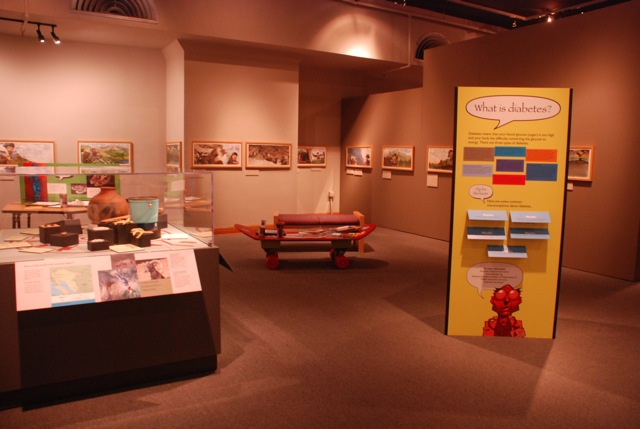 co-curated the exhibit and involved youth from their health program in the development. They also presented at programs and co-sponsored the opening. Their work gained broader exposure in Tucson, the youth got museum training, and the materials from their section of the exhibit will be used again in their own presentations. The Worlds of Words Library displayed some of the Eagle book artwork, provided programming for school groups, and gave the comic book voice during the Tucson Festival of Books. As a result, more people visited their library and learned what they did. The Pima County Health Department Communities Putting Prevention to Work project provided funds and marketing/promotion, participated in programs, printed the comic book and other materials, and is hosting the comic book on their website. The project helped foster their goals and they got a wonderful, cutting-edge product. The comic book pages are the most visited part of their website. These three collaborators provided big contributions that expanded our project and helped ensure reach and impact.
co-curated the exhibit and involved youth from their health program in the development. They also presented at programs and co-sponsored the opening. Their work gained broader exposure in Tucson, the youth got museum training, and the materials from their section of the exhibit will be used again in their own presentations. The Worlds of Words Library displayed some of the Eagle book artwork, provided programming for school groups, and gave the comic book voice during the Tucson Festival of Books. As a result, more people visited their library and learned what they did. The Pima County Health Department Communities Putting Prevention to Work project provided funds and marketing/promotion, participated in programs, printed the comic book and other materials, and is hosting the comic book on their website. The project helped foster their goals and they got a wonderful, cutting-edge product. The comic book pages are the most visited part of their website. These three collaborators provided big contributions that expanded our project and helped ensure reach and impact.
All collaborators, big and small, provided ideas, excitement, furthered outreach and made the project fun to work on. Be sure to keep your partners informed throughout the development, during presentation and to stay in touch afterwards. Thank them publically and privately reflect together on the process and outcomes.
- Be Creative: Don’t toss out ideas because they are too wacky, too big, or you’ve never done them before. The digital comic book was not something we’d ever taken on before and there was some resistance, but this aspect helped drive fundraising because it was “cutting edge” and relevant to the population for which it was intended, attracted an important partner, gave the project on-going life and furthered potential for impact.
- Engagement on Many Levels and Via Diverse Approaches: In your exhibit, provide information in many formats—from labels to hands-on activities to media to participatory techniques. Provide different avenues for engagement with the topic—from the exhibit to programs to materials created to ways for reflection. Remember that museum visits are social and that food, weight, and disease are family issues, not individual ones. Some programs or materials may be just for adults or just for youth and that is fine as long as you provide ways for families to interact with the information at other programs.
- Empowerment: What do you hope your project will accomplish for the visitor? We designed opportunities for visitors to think about issues of health and wellness, to better understand the social, cultural, political, historical and economic reasons for our national health crisis, to reflect on their own lives, and perhaps to take action to become healthier. Create ways for them to do something small to take the first step. Visitors received a pledge card for one thing they could do for themselves or their family to be healthier. At the cultural health fair everyone received prizes for participating in activities and making a pledge—instant gratification for taking the first step towards living in a healthy way.
- Resources: Take on the responsibility of gathering the resources so together you and your collaborators can make the vision a reality. Don’t be afraid to ask for help in approaching others for donations of products, services or money. Also, don’t worry if you don’t have all the content or audience expertise in house—your community collaborators will help fill in the gaps! Be sure to find the funds to hire staff to help make your project successful. Your partners don’t want to be saddled with the logistics of program coordination; they want to be involved with the creative stuff and presenting.
- Communication: Keep everyone in the loop and take responsibility for the timeline and communication. Report on your successes, and your challenges. Don’t forget social media for getting the word out as the project develops. Also, think about the messages in your exhibit and programs—are they creating stereotypes or helping to dispel them by presenting ways for deeper understanding? Be inclusive and don’t point fingers—most social issues affect all of us in some way.
- Involvement: Don’t make it hard to participate—you will discover how much time each person or group can devote and how they would best like to be involved. At first some of your partners may have ideas but may not see themselves actively participating, but as you continue to let folks know the direction things are taking, they may see the perfect spot for their involvement. And if you see a good spot for their expertise, don’t be afraid to ask or give them ideas of how they fit. Invitations and open doors are important. For our project, the Worlds of Words Library was initially interested but reticent to become too involved. They turned out to be an essential exhibiting and programming partner.
- Give Credit Where It Is Due: Publicly give credit and thanks to your partners.
This Recipe for Success was created for the revised edition (in prep) of AAM’s Feeding the Spirit Cookbook: A Resource and Discussion Guide for Museums, Food and Community http://futureofmuseums.org/events/lecture/upload/Feeding-The-Spirit-Cookbook-Final.pdf. A related essay on this project appeared on the Center for the Future of Museums Blog http://futureofmuseums.blogspot.com/2012/01/its-up-2-you.html in January, 2012.
Be open to learning as you put your project together. There are loads of resources about your subject, but you have to develop the skills to work with lots of different people yourself. Don’t worry if things don’t flow exactly as you thought they would—look at where they are going and how you can make it work. Nuture unexpected, but good ideas. Be sure to give credit to your collaborators. And remember, it takes more muscles to frown then to smile and jokes and laughter break tension.
For More Information:
It’s Up 2 You! comic book: look at it on the web at healthypima.org as a free app on iTunes for iPhone, iPod Touch and iPad (keyword: It’s Up 2 You!). It’s big—download over WiFi.
It’s Up 2 You! comic book: read about the project on the Center for the Future of Museum’s blog futureofmuseums.blogspot.com/2012/01/its-up-2-you
Through the Eyes of the Eagle: Illustrating Healthy Living exhibit at Arizona State Museum, general information pages on our exhibit: statemuseum.arizona.edu/exhibits/eyes_of_the_eagle and various blog entries about different facets of the exhibit: statemuseum.arizona.edu/blog/
A Healthy Celebration video: watch on Arizona State Museum’s youtube channel youtube.com/user/azstatemuseum/videos
TOCA Youth video: watch on Arizona State Museum’s youtube channel youtube.com/user/azstatemuseum/videos
Tohono O’odham Community Action: a wealth of information on traditional Native foodways and culture. Visit it at tocaonline.org
Through the Eyes of the Eagle books: Check out the books and resources at www.cdc.gov/diabetes/pubs/eagle/index.html
Through the Eyes of the Eagle: Illustrating Healthy Living For Children traveling exhibit: www.cdc.gov/diabetes/pubs/eagle_exhibition.htm and www.cdc.gov/Features/EagleBooksExhibit/
Arizona State Museum www.statemuseum.arizona.edu/, www.facebook.com/arizonastatemuseum, www.twitter.com/azstatemuseum
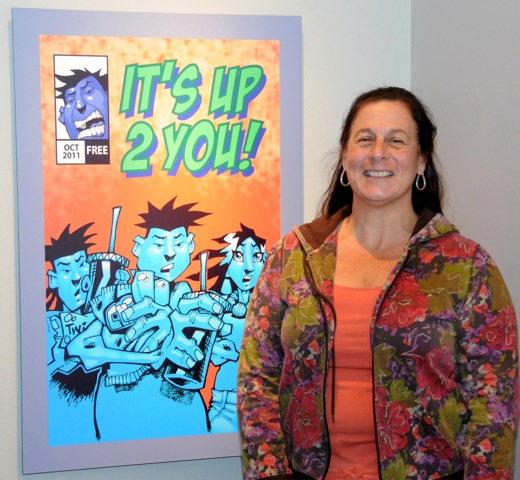 Lisa Falk, Director of Education (Project Director/Lead Curator), Arizona State Museum, University of Arizona, Tucson, AZ. Note she will speak about this project at the WMA Annual Meeting.
Lisa Falk, Director of Education (Project Director/Lead Curator), Arizona State Museum, University of Arizona, Tucson, AZ. Note she will speak about this project at the WMA Annual Meeting.

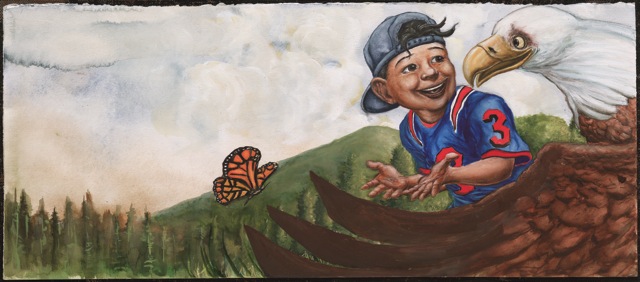
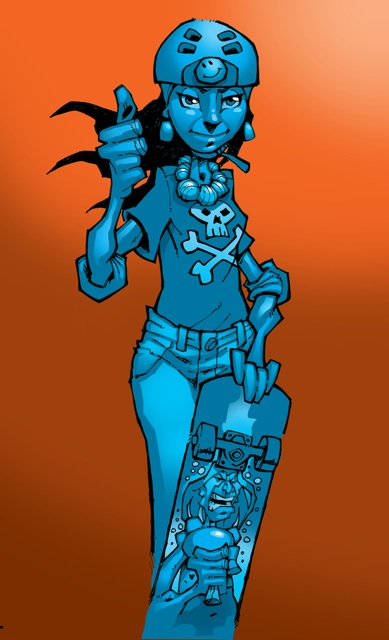







Add new comment